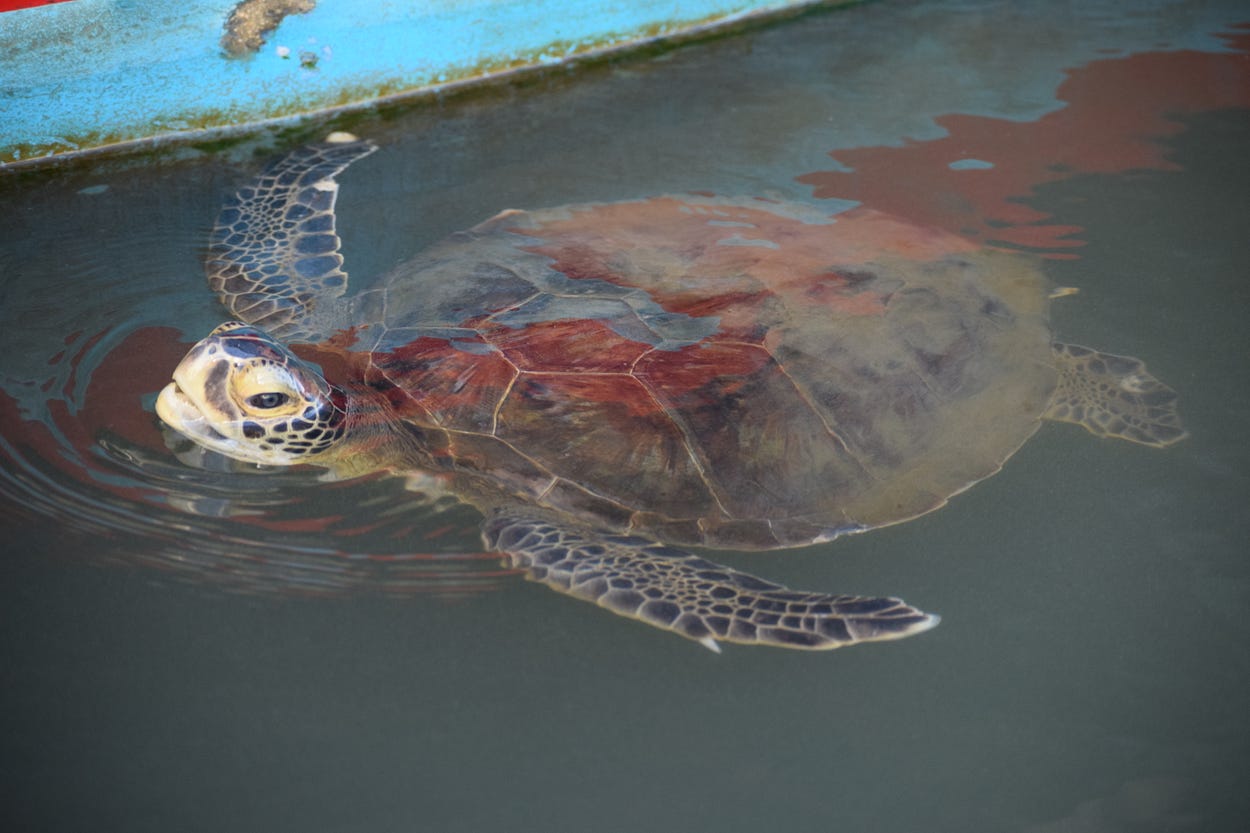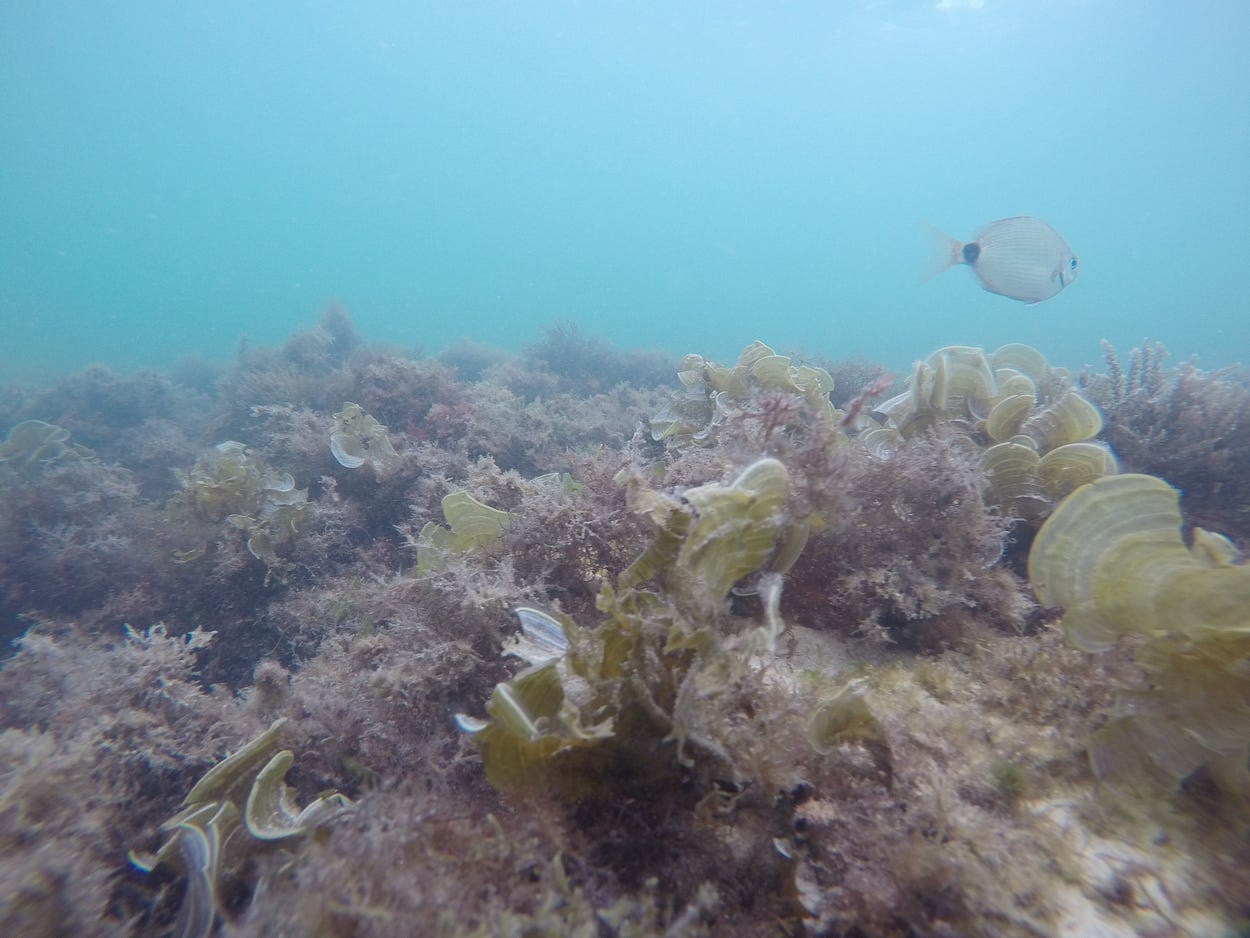By Courtney Cox | gargoyle@flagler.edu
Marinas house a variety of vessels, from dinghies to sailboats and yachts to pontoons. They provide a number of services to each of these unique boats, as well as the owners, that range from a laundromat, electricity and water to pump out services and fuel pumps. The boats and the services present are what essentially make a marina what it is.
However, marinas provide for much more than just the boats and their owners. In fact, while marinas may house a variety of vessels, they are home to a vast array of aquatic species. Marine life is at risk living among the marina habitat, but the risks may be obsolete to them as they are reaping any and all benefits marinas have to offer.
Assistant Professor at Whitney Laboratory for Marine Bioscience, Dr. Todd Osborne, has found that marinas serve as “viable habitat.”
“They create structure,” Osborne said. “Marinas have floating docks and pilings and all of this new surface area that gets colonized by organisms and so, in a way, it does create a substantial amount of habitat in an area that might not have that kind of structure to begin with.”
Species ranging from fiddler crabs to comb jellies, to remora to french angel fish, green sea turtles to dolphins to manatees, have all been spotted within the St. Augustine Municipal Marina.



What’s drawing them to such bustling humanized marinas may very well be due to the provided structure that Osborne described as becoming “colonized.”
“Small organisms, biofilms, algae, even crustaceans, come in and colonize that area and then that attracts other things like predatory fish,” Osborne said. “The structure is habitat and refugia for some species so that may attract prey fish as well.”
It’s those prey fish and small organisms that coincide with the marina being on the Intracoastal Waterway, that draw in the larger species, perhaps dolphins and sea turtles, Osborne said.


Along with small organisms comes algal growth on the docks and hulls of boats. Algae has been seen as a substantial food source for sea turtles. Sailboat owner Mike Alyea keeps his boat in a slip at the Conch House Marina where he’s seen several times green sea turtles and other wildlife feeding along the bottoms of boats and dock slips.
“It certainly does benefit the marine life, you know we’ve got the green turtles that are feeding on the bottoms of the boats, we’ve got mullet I’ve seen feeding on the bottom of the boat,” Alyea said. “But generally boat owners want a clean slick bottom of their boat.”
The growth on the bottom of the boat, as food friendly as it is for some of the marine life, isn’t as environmentally or economically friendly as one might think, Alyea said.
“The excess growth slows the boat down. It also causes the boat, because it’s slowed down, you’re burning more fuel to get from point A to point B. So, it’s kind of a give and take,” Alyea said. “Although the excess growth provides a food source for some of the marine life, you’re now burning more fossil fuels with a fleet of boats that have overgrown bottoms.”



Eric Ziecheck, the manager and assistant dockmaster at the Marineland Marina, has made sure its taking the necessary steps to peacefully coexist with marine life through the Clean Marina Program (CMP) put in place there.
“As a clean marina, green marina, we provide opportunity for boaters to make sure that their sewage is being collected properly through our pumpout system,” Ziecheck said. “We ensure that boaters are using the right soaps to wash their vessels; that would be marine grade, biodegradable. And the key there is with some products are biodegradable in soil—we make sure it’s a product that’s going to be biodegradable in the water. That makes sure that the microscopic life isn’t being damaged through corrosives, bleaches, etc.”
The CMP was instituted by the Florida Department of Environmental Protection (DEP) in 2000 and has slowly but surely been catching on. Currently, there are 301 designated clean marinas in the state of Florida, according to the Florida DEP.

Locations of designated Clean Marinas in Florida. Picture credit: Florida DEP
“The Florida Clean Marina Program is a voluntary designation program with a proactive approach to environmental stewardship. Participants receive assistance in implementing Best Management Practices through on-site and distance technical assistance, mentoring by other Clean Marinas and continuing education,” according to the Florida DEP.
In order to become designated as a Clean Marina in Florida, the marinas must derive a set of environmental standards created to protect Florida’s waterways. The standards should address crucial environmental problems like vulnerable habitats, waste management, spill prevention, stormwater control and emergency preparedness, according to the Florida DEP.
For Ziecheck, a clean ‘green’ marina is the standard that everyone will likely be sure to follow.
“We’ve had enough education to understand that our impact has ability to either lessen damage to the ecosystems or it has the ability to severely threaten them. And I think that just through time that ‘green’ has become a title that slowly everybody is catching up to.”
There are a number of benefits for marinas when they join the Florida CMP, according to the Florida DEP:
- A 10 percent discount on state land lease fees.
- A CMP flag to display on location.
- The Florida CMP certification plaque.
- Access to electronic materials including the Clean Marina logo, advertisement templates and more.
- Compliance and technical assistance from program coordinators while seeking certification and re-certification.
- Enhanced public image by incorporating environmentally sound practices which improve marina aesthetics.
- Reduced pollution and improved water quality in Florida’s waterways.
- Financial savings from adopting cost-effective Best Management Practices such as oil recycling and energy efficiency.
- Reduction in environmental liability insurance premiums.
- Free publicity through program promotions, newsletters, workshops and Florida Clean Marina marketing.
- Promotion on the Florida EP’s website.
Although marinas may benefit and surely the environment will as well, Ziecheck said that some disadvantages of the CMP discourage potential customers and boaters.
“If you look at it as a business, you can potentially lose a customer if they interpret what green may mean to them and they see it as something as an adversary possibly. You know, maybe they don’t want to come in and have to worry about someone asking them if their head (bathroom) has been pumped out, if there’s sewage, if they have a bilge,” Ziecheck said. “A lot of people see their boats as their domicile.”


Adding eco-friendly supplies and spill-kits also get thrown into the budget, Ziecheck said. This can be a disadvantage for boaters because now they’ll have to rethink their budgets and plan accordingly.
And while boaters like Alyea support the environmental efforts of marinas like Marineland Marina, people shouldn’t expect marinas to “enhance the environment,” he said.
“As long as the marinas are working to minimize their potential negative environmental impact then I think the side benefit that they’re providing, just by luck if you will, an artificial reef-type environment, that brings in marine life—I’m in the opinion that that’s about all we need to expect out of the marina industry,” Alyea said.

But perhaps one of the more harmful negative environmental impacts of marinas rests within the structure of the floating docks that marine life and boat owners utilize so much of. The custom-made floating docks used, as verified, at the Conch House Marina and St. Augustine Municipal Marina are made up, almost entirely, of styrofoam.
Although hidden beneath the rub rails, cleats and concrete pathways, hurricanes like Irma or powerful tropical storms strip away their barriers unleashing the styrofoam body to the surrounding marine environment.
Alyea, noted the heavy amounts of styrofoam pollution post Hurricane Irma just from walking the shoreline of the Conch House Marina.
“You can see the particles of styrofoam that have been dislodged by the breaking up of the docks. And so you’re just introducing an element of plastic pollution into the environment,” Alyea said. “ I would like to see another way to construct floating docks so that you didn’t run that risk.”
On the west coast of the United States, action has already been taken by the San Francisco County Board of Supervisors when they unanimously passed a ban on the sale of styrofoam that prohibits foam cups, foam packing and mooring buoys that started Jan. 1, 2017.
The styrofoam by itself is a “nuisance trash,” Osborne said. There is a physical and chemical element to it.
“The physical element is just really the aesthetics of floatable garbage that ends up on our shorelines,” Osborne said. “I think probably more dangerous about using styrofoam is, what we know, the chemical process of making it releases a lot of chemicals that are harmful to the atmosphere. So that has one drawback to it. The other is that these things will break down to smaller and smaller pieces, mostly they float, but some of them at some point will be small enough to attract biofilms and actually sink. And so like the microplastics there’s a good chance they’re going to get into the environment in terms of having an effect on organisms.”

Curious species like sharks, sea turtles, seabirds and other fish will see it and likely investigate by biting it, Osborne said. And with 950,000 pieces of foam that volunteers found on beaches across the globe during the 2015 Cleanup, there’s plenty of styrofoam out there for aquatic species to get a hold of, according to Ocean Conservancy’s blog author, Nick Mallos.
Problems like this start at the production level. Until a cost-efficient floating alternative material is found, styrofoam will remain a part of these marinas.
Marine life will continue to be a part of the marinas, for worse or for better, but Ziecheck is optimistic about the future of marinas and marine life’s coexistence.
“Slowly but surely I believe the customer is just going to demand that they enter a marina that has that green clean mentality because everybody wants to see a healthy life.” Ziecheck said. “They’re not all green yet, but hopefully soon.”




Be the first to comment on "Marinas and marine life: the unnatural habitat marinas provide"